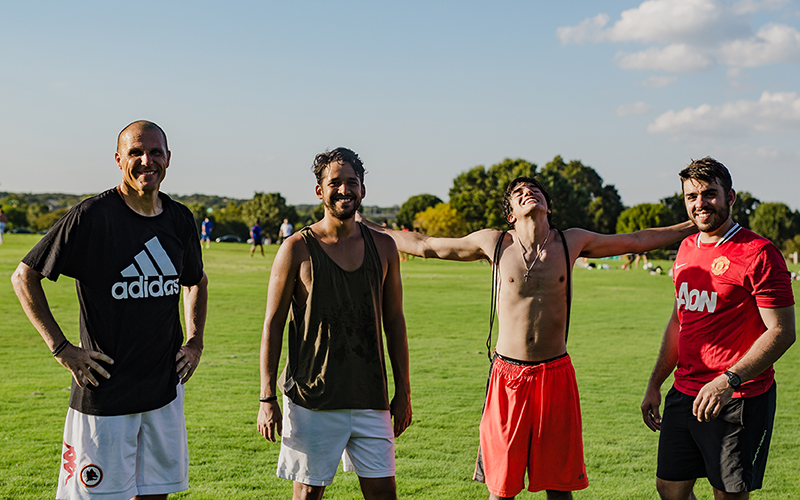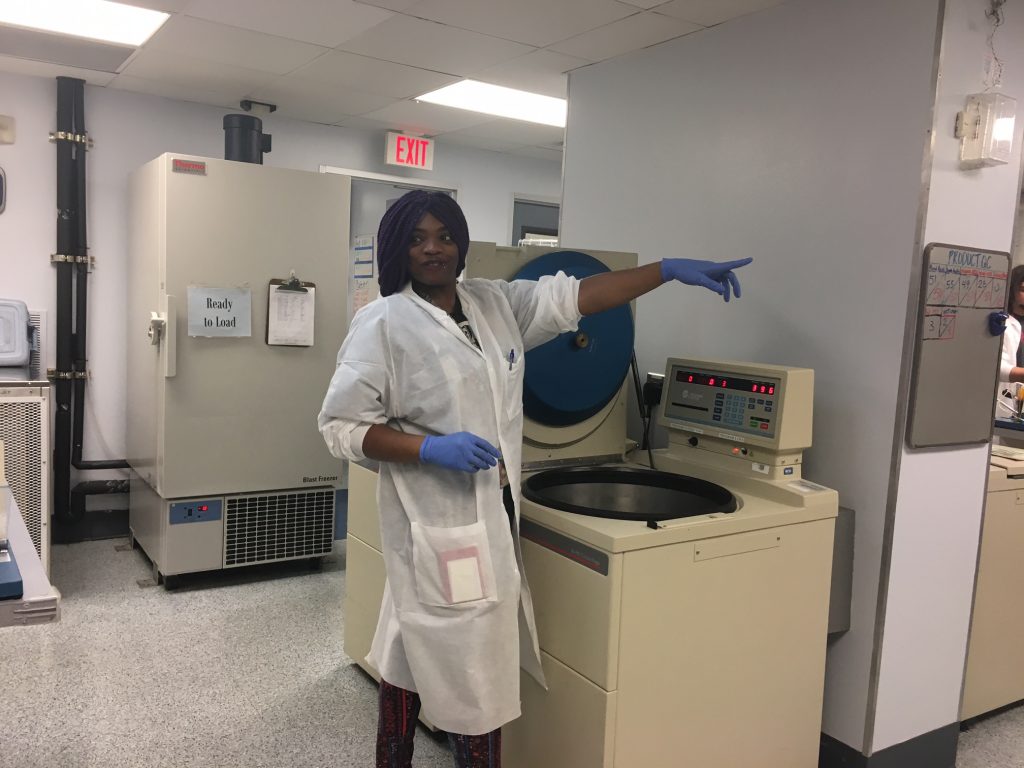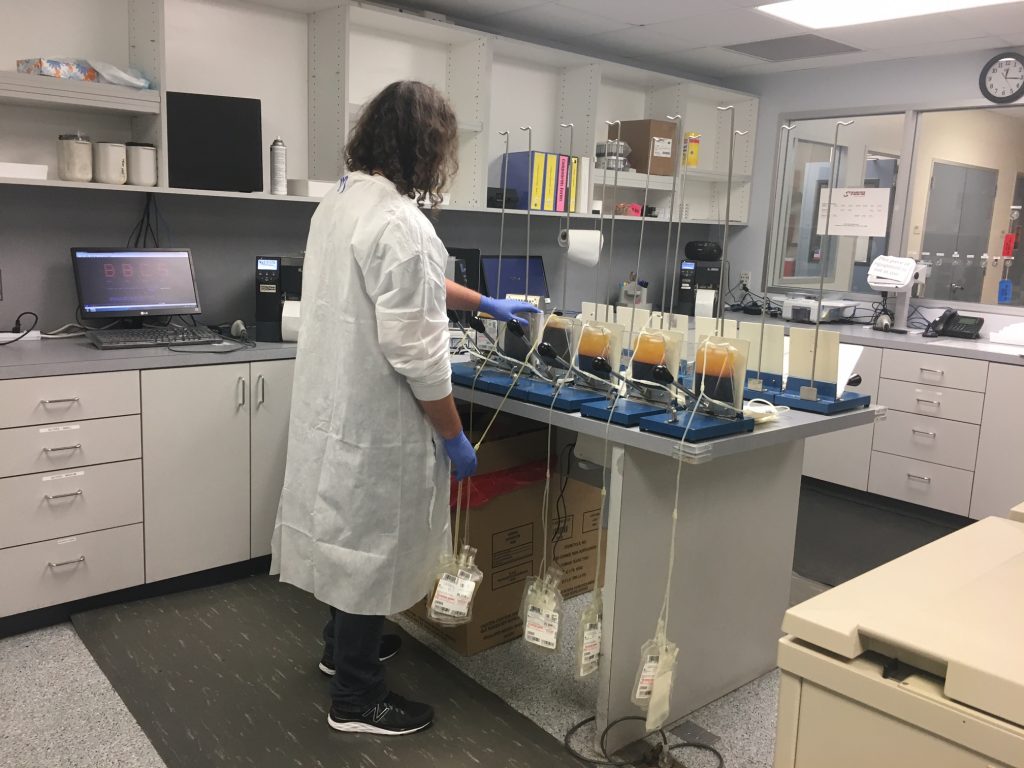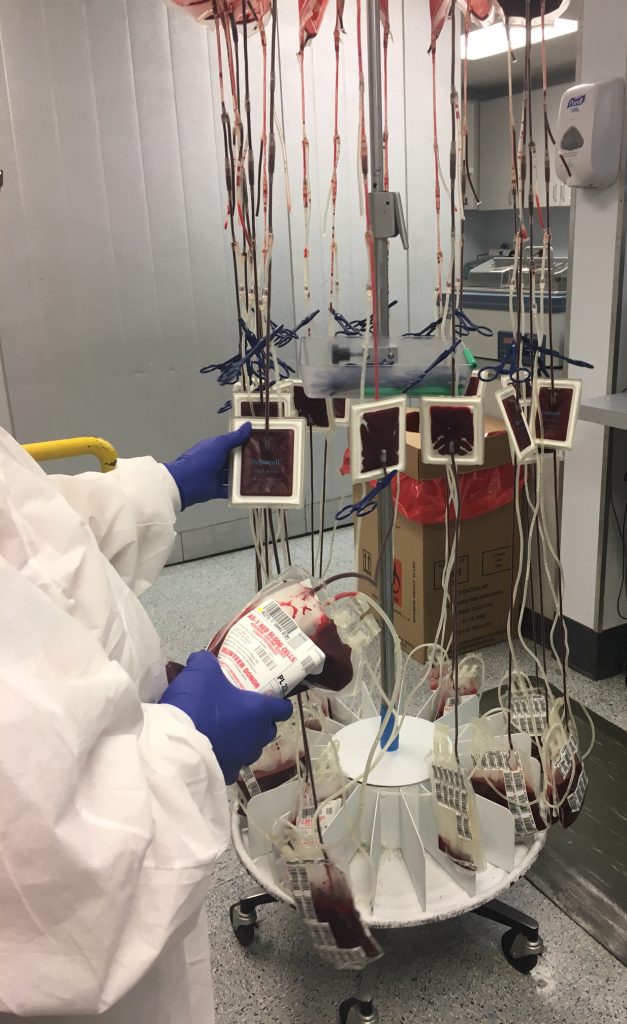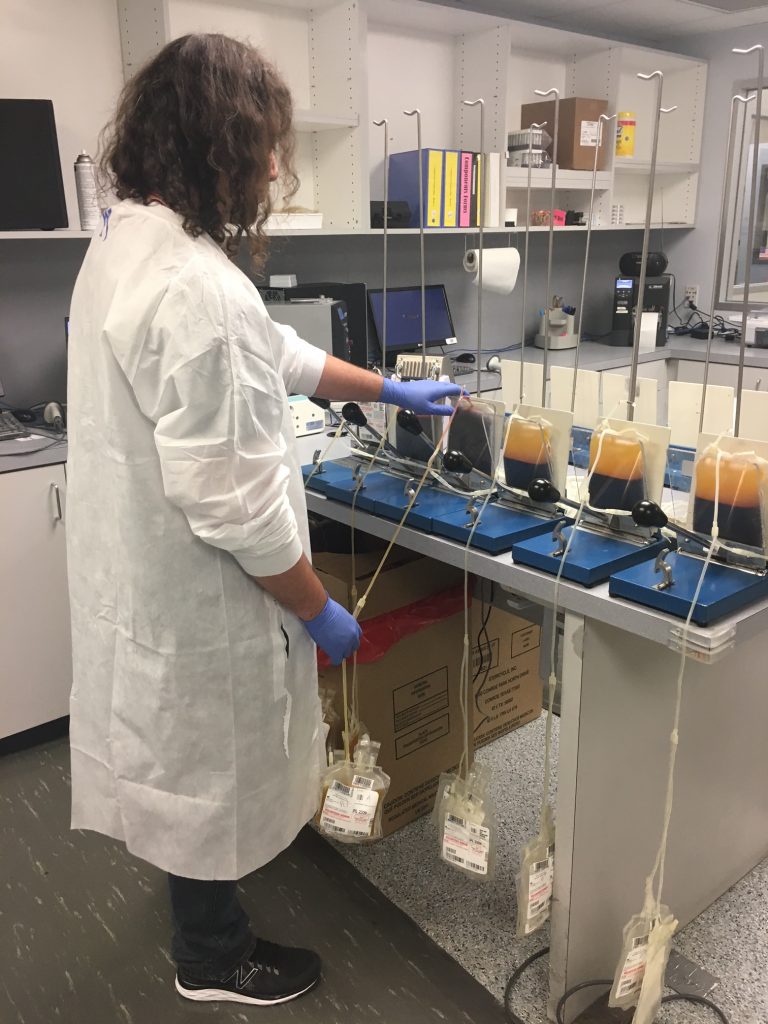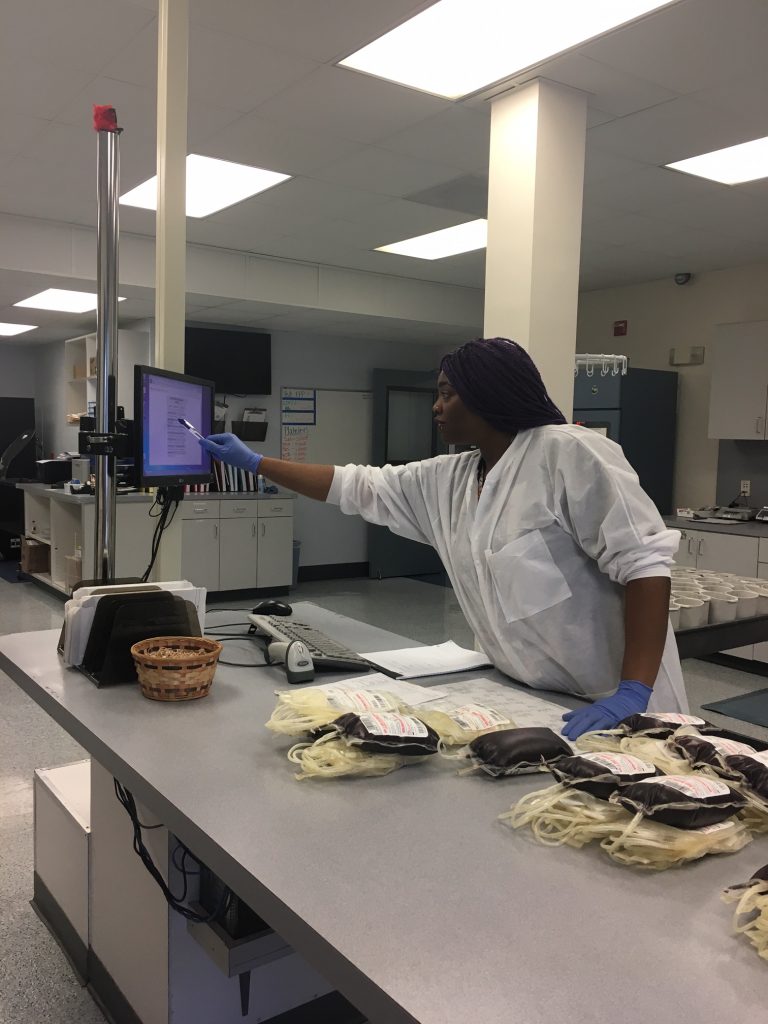As a blood donor, you’re probably familiar with the basic process of donating blood. You walk into a donor center or blood drive, answer some health-related questions, someone draws your blood, and then you get to drink all the juice and eat all the cookies you want. But a lot of you might wonder,
“What happens after the juice and cookies? Where did my blood go and how does it get there?”
Well we’re going to give you a behind the scenes look at the journey your donation takes after you’ve donated WHOLE BLOOD and how it helps the people in our community.
*The process looks a little bit different if you donate DOUBLE RED or PLATELETS, but we’ll talk about that at a later date.
Your blood’s journey begins when a staff person or volunteer picks it up from your donation location and delivers it to our “Components Laboratory.” Once there, the components staff has an eight hour window to make sure the blood is properly processed and stored.
What are components?
Our blood contains four components:
- platelets
- plasma
- red cells
- white cells
Combined, each of these components work together to keep us alive and healthy, but they can also be separated by our staff and used by hospitals in a variety of ways to save MULTIPLE people’s lives.
While the platelets from your donation may go to help one person, the red cells may go to help another and the plasma could be used to help someone else.
Just think about it for a second. The stranger you sat next to on the bus, or the person that makes your morning coffee, or the stranger that held the door open for you last week before dinner–ALL THREE of these people could theoretically have been helped by your ONE donation. When you donate blood you are not just helping random strangers, you are helping the people in your community and making your community stronger.
The Journey of a Red Blood Cell
Our components lab staff will begin the process of separating out the individual components of the whole blood donation. The first step is to place the donation into a large centrifuge, which is about the size and shape of a washing machine.
The centrifuge will be spun at 2,600 RPMs for five minutes; which will separate the red blood cells from the platelets and plasma. Once this step is finished the lab technician will use a device called an ‘expresser’ to separate the red cells into their own bag.
The expresser relies upon plain old gravity to help separate the different blood components.
Next, a preservation solution is added to the red cells. This solution helps extend the shelf life of red cells from 35 days to 42 days, which allows for extra time for the red cells to be utilized by hospitals.
The staff then places the red cell bag onto a rack which allows gravity and a small filter to separate the white blood cells from the red blood cells into a different bag.
This process takes about fifteen to thirty minutes to complete. From there the red blood cells are temporarily placed into a walk-in freezer and stored between 1-6 degrees Celsius, while the staff awaits the test results for each donation.
Two P’s in a Pod
After your red blood cells are separated out, your platelets and plasma are now still together and need to separated.
They will take a second spin in the centrifuge, this time at 3,600 rpm for ten minutes. Once they finished their second spin they will go through the same process as the red cells and the platelets and plasma will be separated using the expresser.
Having gone through two spins in the centrifuge the platelets are a little beaten up and will be set aside for one hour without being touched or moved so they can rest. This gives them time to recover and makes sure the platelets aren’t damaged.
After their one hour of rest the platelets will go through a bacteria detection test to ensure that there is no bacteria present within the platelet donation. They will also be weighed and counted by a lab technician. Then they will be placed in an incubator that will keep them at room temperature and in constant motion so that the platelets do not clump together. Platelets only have a shelf life of five days, so is vital that the staff work as quickly as possible to get them prepared to be distributed to hospitals for use.
After the platelets go on their own journey, the plasma continues on its own path. The plasma will be frozen and placed in a walk-in freezer where it is stored at below -18 degrees Celsius. Plasma can be frozen and stored for up to a year, but once thawed it must be transfused within twenty four hours.
Testing
While the components staff are processing and storing all of the blood product, a separate lab is simultaneously conducting testing to determine if the blood product can be cleared for use by hospitals or clinics. The labs conduct rigorous and thorough tests to determine the safety of each and every donation we receive. The test results are available within about twenty four hours and a report will be generated for our laboratory team.
A staff person uses this report to see that all of the blood product that has been cleared for use is then transported to our storage freezers where it can be stored until it is needed by hospitals or clinics. Any product that is not cleared through the testing process will be removed from the temporary storage, properly labeled and tracked for disposal.
After the donations have been properly stored, a staff person will make sure that all of the donations are arranged by expiration date and blood type. This helps ensure that we are managing the donations efficiently and effectively to ensure that no blood product is allowed to expire.
Hospital Services
Once we receive a request from a hospital or clinic for blood product our Hospital Services team springs into action. They immediately identify what product is needed, the quantity needed and how quickly it is needed by the hospital. The Hospital Services team then begins preparing the product to be properly packaged and stored for transport to the hospital. They transport the donation using one of our colorful We Are Blood SUVs to the hospital where the medical staff at the hospital uses it to help a patient in need.
Many of those patients in need are people from our own community in Central Texas, they could be that stranger you sat next to on the bus or the person that makes your morning coffee or the stranger that held the door for you at a restaurant. Your donation helps keep our community connected in ways that we often aren’t able to see, so although you may not be able to see it, we are connected. We Are Blood.


